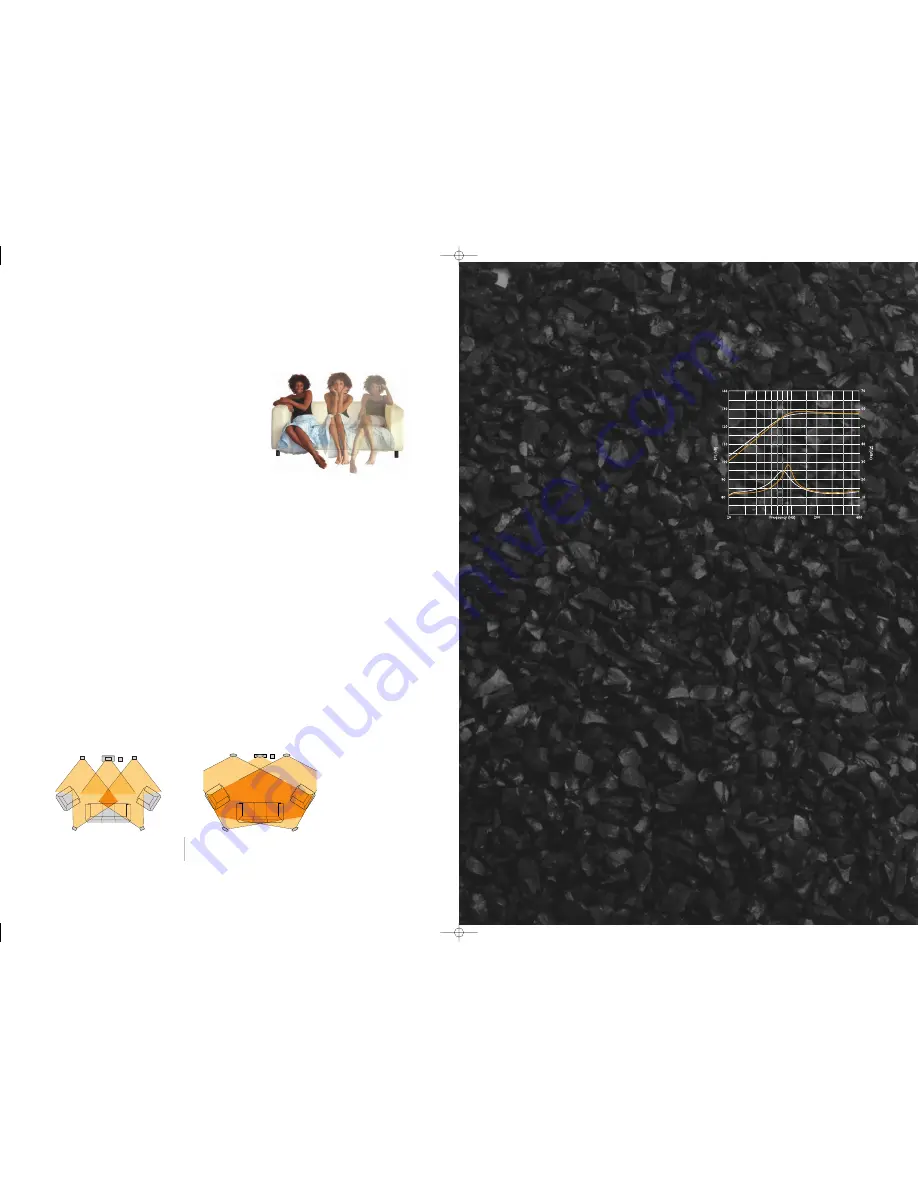
Based on those developed for the legendary
Reference Series, the Uni-Q arrays in the KHT
range are the most sophisticated yet,
with metal dome HF drivers that reproduce
the human voice with breathtaking accuracy.
In purely practical terms, the larger sound
image gives you far greater flexibility in placing
your speakers where they look best. For home
theatre, it means that you experience even the
subtlest 3D soundtrack effects with the same
clarity and realism wherever you sit.
Uni-Q
Excellent dispersion characteristics common
with all Uni-Q based products showing wider
listening area.
Conventional loudspeaker dispersion showing
narrow ‘sweet spot’.
Technology
KEF’s patented Uni-Q driver configuration
disperses the sound image over a much larger
area than a conventional speaker, instead of
being restricted to a small ‘sweet spot’.
This outstanding off-axis response is made
possible by using aerospace materials to
engineer a high performance tweeter that’s
small enough to mount in the exact acoustic
centre of the bass/midrange cone so that both
act as a single point source - an ideal that,
so far, only KEF has achieved.
03
ACE
Effect of ACE on a 10 litre closed box loudspeaker
The holy grail of loudspeaker design has always
been to generate big bass from small boxes.
The trouble is, the laws of physics make this
almost impossible to achieve, as bass extension
relates directly to efficiency and cabinet size.
Continuing a 40-year tradition of genuine
design innovation, KEF engineers have now
developed a way of overcoming this apparently
insoluble limitation. It’s called Acoustic
Compliance Enhancement (ACE), and it works
like this. In conventional speakers, cone motion is
restricted by the acoustic pressure in the
enclosure as the air is alternately compressed
and expanded by the cone moving in and out.
The smaller the enclosure, the greater the
pressure that acts on the cone. By dramatically
reducing this pressure, ACE allows the cone to
move as freely as it would in a much larger
cabinet, generating bass extension out of all
proportion to its actual size.
This is achieved by introducing granules
of activated carbon into the enclosure
- a material containing millions of pores
ranging in size from visible fissures to
holes a few molecules across. One of its
characteristics is a capacity for physical
adsorption, the gravity-like molecular force in
which a substance (usually a gas) accumulates
in a thin film on the surface of a solid. In the
ACE loudspeaker when the cone moves
inwards the air pressure increases,
triggering adsorption of air molecules from
the free air into the carbon.This removal of air
molecules from the free air causes the internal
pressure to decrease. When the cone moves
outwards the opposite happens and the
carbon gives out air molecules. The ACE
material is constantly acting to reduce the
pressure variations in the enclosure in a
controlled and linear fashion.
It’s an innovation that makes an amazing
difference for the listener. By enhancing
compliance by anything from 150% to 300%,
ACE-enabled loudspeakers perform like units
up to three times their size. In trials of
identical Uni-Q arrays fitted to an ACE
enclosure 40% smaller than the test cabinet,
not only did the listeners agree that bass was
undiminished - they unanimously preferred
the bass attack of the ACE version. And that’s
the acid test of any radical breakthrough in
audio design: subjectively as well as objectively,
ACE enriches the listening experience.
04
K1337_KHT_Interim_Bro_EN 4/4/08 09:52 Page 5
















